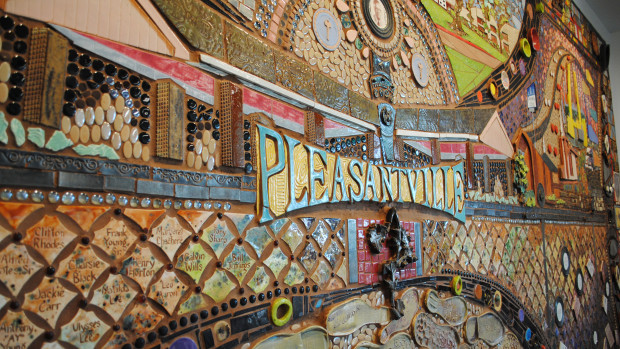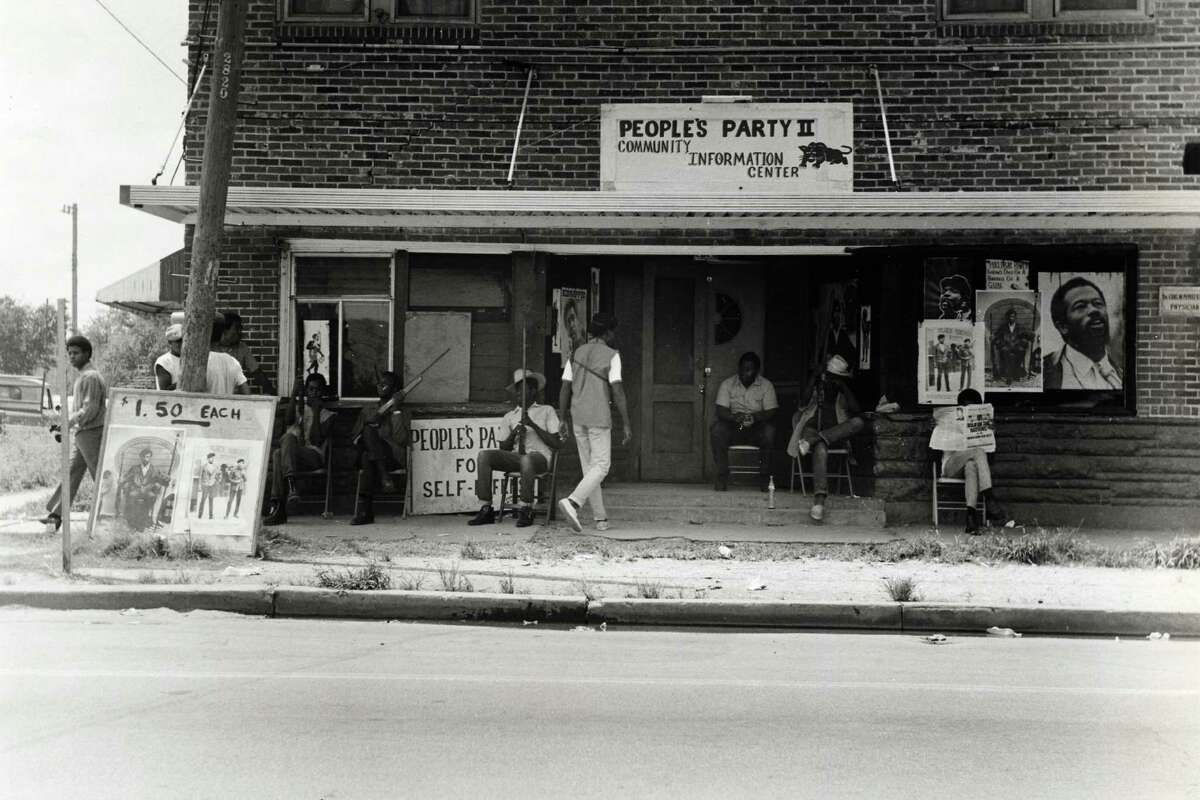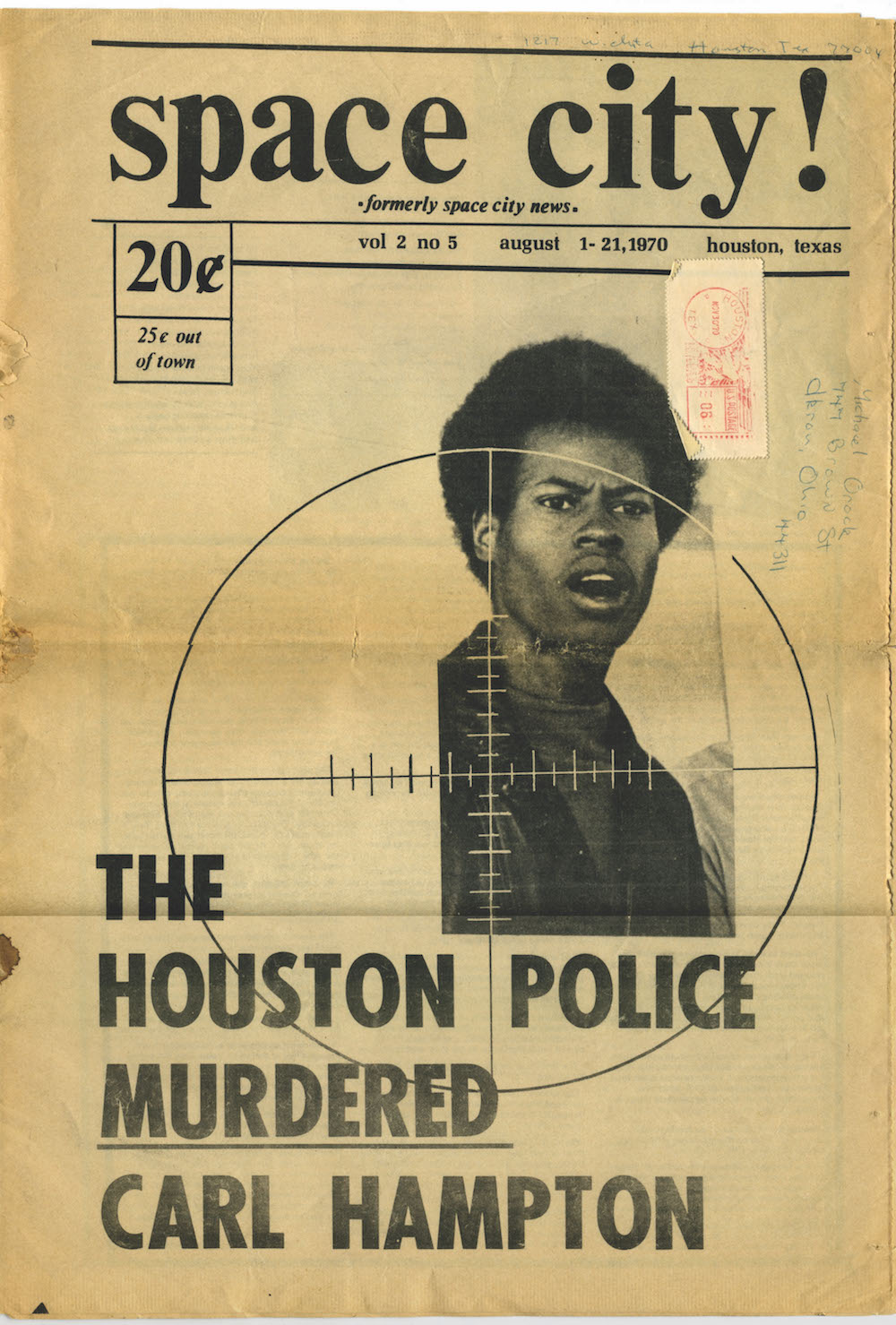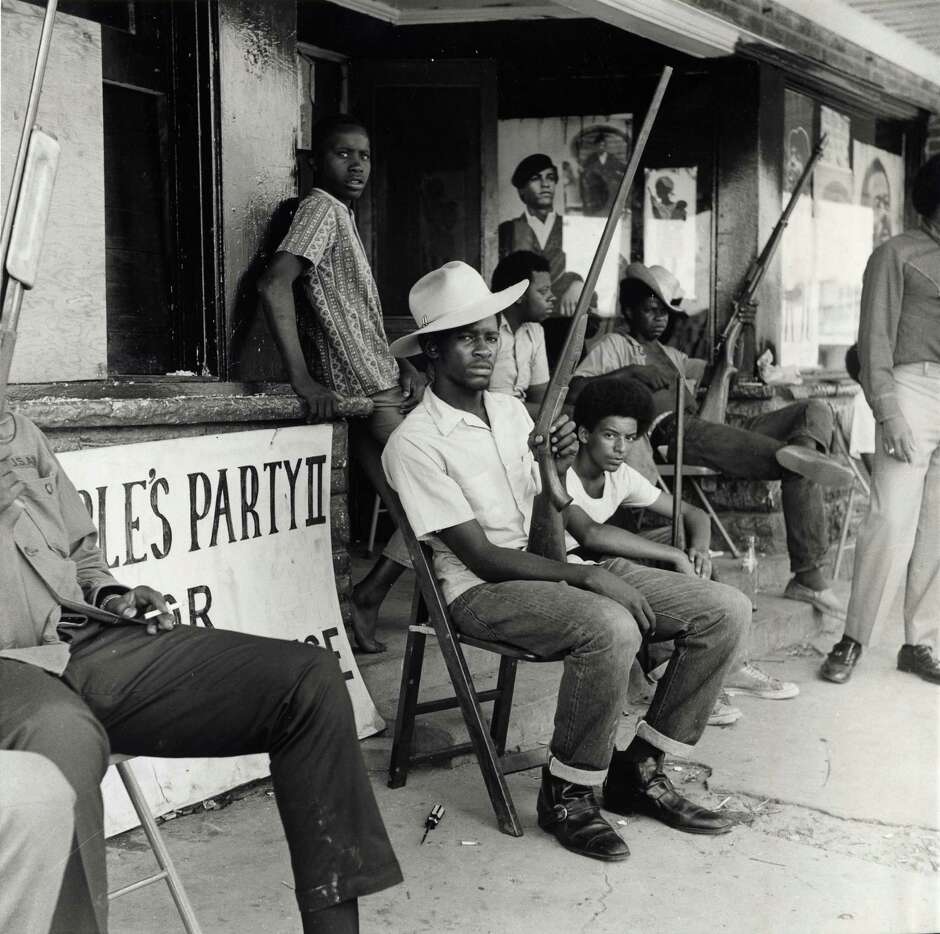You are using an out of date browser. It may not display this or other websites correctly.
You should upgrade or use an alternative browser.
You should upgrade or use an alternative browser.
Houston TX thread
- Thread starter Based Lord Zedd
- Start date
More options
Who Replied?FOR YOU HOUSTON BRUHS,
EVENTS IN HOUSTON . THIS SITE UPDATES ITS EVENT
eclectic,soulful,rap,jazz type of events not hood related
Houston - Global Soul Events, Music, News
EVENTS IN HOUSTON . THIS SITE UPDATES ITS EVENT
eclectic,soulful,rap,jazz type of events not hood related
Houston - Global Soul Events, Music, News
Carl Hampton and the People's Party II really had a stand off with HPD, had them shook, made them back down, and actually took over and occupied whole blocks in 3rd ward in 1970 for over 10 days before he was assassinated, in what was probably the most significant event of the black power era in Texas.
Carl Hampton was born and raised on the east side of Houston in the Pleasantville neighborhood.

Carl would eventually leave at 16 with his family to live in Oakland CA where he would become an active member in the Black Panther Party.
Carl wanted to start a local chapter of the BPP in Houston, but the BPP weren't accepting new chapters at the moment so Carl went back home and started a group he called the People's Party II, because he saw the Black Panther Party as the first people's party. And he set up Dowling st(now emancipation blvd) as it's headquarters.

The PPII like the BPP set up free breakfast program for children, but also set up a free pest control program for the residents of third ward, free transportation for the elderly to doctors appointments and to grocery stores.

The PPII were also staunch advocates of armed resistance and guerilla warfare tactics. Carl himself was a Maoist and pro-Vietcong revolutionary.

Demands made by the PPII of the government included black juries and judges for black people charged with crimes, freedom for all black people in jail, descent housing & jobs for black people, exemptions for black people from military service, as well as reparations for past transgressions on African-Americans.
One day when Carl was returning from a trip he spotted two police officers harassing a young PPII member for passing out Black Panther newspapers, and he confronted the officers with his gun. The officer questioned why Carl had his gun, to which Carl responded that it was his constitutional right, and he owed no further explanation. The officer then reached to draw his gun, but Carl beat him to the punch and drew his gun, and they were at a standoff. The officer in the squad car then called for back up. Carl and other members of the PPII would retreat and barricade themselves inside the office.

Police back up in riot gear would eventually arrive and they sent a negotiator inside to persuade Carl to give himself up for arrest. Carl refused and later after hours members of the Third ward and surrounding black neighborhoods in Houston would flood the street with their arms to protect Carl from the Police. The Police not knowing how to handle the situation would retreat. Many in the black community were emboldened by this victory against the HPD.
Many more black people around the city would poor into to Dowling st to offer support many armed, many there to prepare food for the revolutionaries. One activist from the community even went into front of the Houston city council to boastfully declare that the PPII and supporters as "secured" the neighborhood and any cop found venturing their would be shot, and he requested that no cop go there. Carl even did an interview with the local news station during the occupation.
The city didn't take kindly to the threats, and had been planning with the Houston Central Intelligence Division a military style assault on Carl and the PPII headquarters in 3rd ward.
Carl Hampton was born and raised on the east side of Houston in the Pleasantville neighborhood.

Carl would eventually leave at 16 with his family to live in Oakland CA where he would become an active member in the Black Panther Party.
Forgotten Houston July 1970: HPD vs. the Black PanthersBy the time Carl Hampton came to Houston in 1969, the distrust between the community and the police had reached a fever pitch. Hampton, who had grown up in Pleasantville before moving to California in his teens, considered himself an urban guerilla fighter and was determined to set up a chapter of the Black Panther Party in Houston.
Carl wanted to start a local chapter of the BPP in Houston, but the BPP weren't accepting new chapters at the moment so Carl went back home and started a group he called the People's Party II, because he saw the Black Panther Party as the first people's party. And he set up Dowling st(now emancipation blvd) as it's headquarters.
Carl Hampton honored on 45th anniversary of assassinationHampton had gone to Oakland in the late 1960s to work with the Black Panther Party and returned to Houston hoping to open a chapter. The national headquarters was not authorizing chapters at that time, thus Hampton named the organization he began in Houston, Peoples Party II.

The PPII like the BPP set up free breakfast program for children, but also set up a free pest control program for the residents of third ward, free transportation for the elderly to doctors appointments and to grocery stores.
Black Panthers honor their legacyIn Houston, the Black Panther Party succeeded in opening a free breakfast program for children, offering no-cost pest control in Third Ward and transporting seniors to grocery stores and doctor appointments.

The PPII were also staunch advocates of armed resistance and guerilla warfare tactics. Carl himself was a Maoist and pro-Vietcong revolutionary.
https://blog.chron.com/bayoucityhistory/2010/07/the-death-of-carl-hampton/A search of the headquarters uncovered literature on Mao Tse-tung, urban warfare and how to shoot down helicopters. Also found were several weapons, gas masks and tear gas.

Demands made by the PPII of the government included black juries and judges for black people charged with crimes, freedom for all black people in jail, descent housing & jobs for black people, exemptions for black people from military service, as well as reparations for past transgressions on African-Americans.
One day when Carl was returning from a trip he spotted two police officers harassing a young PPII member for passing out Black Panther newspapers, and he confronted the officers with his gun. The officer questioned why Carl had his gun, to which Carl responded that it was his constitutional right, and he owed no further explanation. The officer then reached to draw his gun, but Carl beat him to the punch and drew his gun, and they were at a standoff. The officer in the squad car then called for back up. Carl and other members of the PPII would retreat and barricade themselves inside the office.
The Police Assassination of Carl HamptonIt all began on a hot and humid summer afternoon, July 17, 1970. Carl would be returning from a trip home back to the Headquarters of People's Party II (PPII). Upon arriving and stepping out of the car, he noticed two uniform patrolmen harassing a young brother who had been selling the "Black Panther Newspaper" on the street curb in front of the Headquarters. He approached the officer and inquired about the nature of the problem. Carl was wearing an unconcealed .45 automatic pistol strapped across his chest in a shoulder holster (legal at that time). The police officer, startled at seeing a young Black man openly wearing a pistol, immediately withdrew his attention from the initial cause of being there. He then confronted Carl and questioned him as to why he was wearing a gun. Carl responded by telling him he had a constitutional right to bear arms. Again shocked and infuriated by this reply, the officer began reaching for his gun. Seeing this, Carl instinctively drew his gun from his holster, beating the police to the draw. At that same moment, two members in the community center emerged with weapons to join in the confrontation. The driver of the patrol car quickly radioed for back up.

Police back up in riot gear would eventually arrive and they sent a negotiator inside to persuade Carl to give himself up for arrest. Carl refused and later after hours members of the Third ward and surrounding black neighborhoods in Houston would flood the street with their arms to protect Carl from the Police. The Police not knowing how to handle the situation would retreat. Many in the black community were emboldened by this victory against the HPD.
Forgotten Houston July 1970: HPD vs. the Black PanthersBefore the cops could storm the People's Party II headquarters, hundreds of Third Ward residents, many of them armed, had surrounded the building — effectively creating a human shield for those inside.
HPD officers in riot gear arrived on the scene and began positioning themselves behind buildings and cars. In an attempt to defuse the situation, an HPD commanding officer entered the People's Party II headquarters to try to negotiate Hampton's surrender.
Remembering the alleged beating death of Conner, Hampton said that he had better chances on the streets with his lawyer negotiating his terms of surrender, according to Houston historian Charles "Boko" Freeman's telling of the events.
Seeing no hope of compromise, the HPD officer left the People's Party II headquarters. Not wanting to open fire on an entire neighborhood, HPD backed down without arresting Hampton or any members of the People's Party II. The police department's decision not to try to arrest Hampton only emboldened the party members.
Many more black people around the city would poor into to Dowling st to offer support many armed, many there to prepare food for the revolutionaries. One activist from the community even went into front of the Houston city council to boastfully declare that the PPII and supporters as "secured" the neighborhood and any cop found venturing their would be shot, and he requested that no cop go there. Carl even did an interview with the local news station during the occupation.
The city didn't take kindly to the threats, and had been planning with the Houston Central Intelligence Division a military style assault on Carl and the PPII headquarters in 3rd ward.
Forgotten Houston July 1970: HPD vs. the Black PanthersNot wanting to open fire on an entire neighborhood, HPD backed down without arresting Hampton or any members of the People's Party II. The police department's decision not to try to arrest Hampton only emboldened the party members.
"On several evenings after that armed party members and their sympathizers paraded in Dowling Street, sometimes stopping traffic and asking for donations to their cause," according to a July 28, 1970 Houston Post editorial. The party members seemed to become bolder with each passing day, and neighborhood residents and those involved in revolutionary politics could see that a showdown was coming
Ovide Duncantell, a black activist unaffiliated with the People's Party II, appeared at a Houston City Council meeting to warn HPD to stay away from the party headquarters.
"The law will be enforced in the 2800 block of Dowling as it is everywhere. There is no place in this city where a policeman can't go," HPD chief Herman Short responded, according to the Houston Chronicle.
Last edited:
Cont.
On day 10 of the occupation on Sunday July 26, two young black brehs one 15 the other 19 in the block behind the PPII headquarters brandished their weapons at two cops, then ran into a near by church, but where subdued by the church members, disarmed, and turned in for arrest. The brehs stated they did it because they heard police were looking to kill black people.
A rally in the community formed after the arrest and the HPD and CID saw this as their chance to move in on Carl and the PPII headquarters.
Snipers from the CID positioned themselves on the roof of St. Johns Baptist Church, the tallest building on the same block as the PPII headquaters, and waited for Carl to appear out of the office.
Carl came out to give a speech at the rally in front of the PPII office, when two women drove by screaming that there were two white men with guns on top of the church. Carl asked the white allies with the John Brown Revolutionary League (JBRL) if any of their members were stationed on top of the church. They confirmed that they weren't, so Carl went over tot the church with his M-1 Carbine to check it out while taking over behind a light pole, and the CID officers positively identified Carl when he peaked his head around and shot him multiple times and a gun fight ensued.
A woman rushed over to where Carl was laying and dragged him to her car and drove him to the hospital, where he later died.

Over 60 PPII members and supporters were arrested.

Carl's death spurred a wave of emotions and activism in the community. Many black organizations began to join forces under the rallying cry "Carl Lives!!!!".

And the PPII of Houston was finally granted official status as a chapter of the Black Panther Party a year later in 1971, thanks to the work of Carl Hampton.

On day 10 of the occupation on Sunday July 26, two young black brehs one 15 the other 19 in the block behind the PPII headquarters brandished their weapons at two cops, then ran into a near by church, but where subdued by the church members, disarmed, and turned in for arrest. The brehs stated they did it because they heard police were looking to kill black people.
A rally in the community formed after the arrest and the HPD and CID saw this as their chance to move in on Carl and the PPII headquarters.
Black Militant Slain By Houston Police; Gun Fight Injures 4The newest incident began about 6 P.M., when two police men met a 19‐year‐old youth and a 15‐year‐old boy, both Negroes, who were carrying weapons in the block behind the Peoples Party headquar ters.
The policemen reported to day that, when they tried to stop the two, the youth pointed pistol at them and then fled into a church nearby. Three men attending Sunday night worship services disarmed the youth and turned him over toi the police.
The 15‐year‐old boy, who had a shotgun, surrendered his weapon, the police said, saying that he had been told that policemen were coining to shoot Negroes and that a large crowd of armed black men were in the Peoples Party head quarters. The rally began after the arrests.
Snipers from the CID positioned themselves on the roof of St. Johns Baptist Church, the tallest building on the same block as the PPII headquaters, and waited for Carl to appear out of the office.
Carl came out to give a speech at the rally in front of the PPII office, when two women drove by screaming that there were two white men with guns on top of the church. Carl asked the white allies with the John Brown Revolutionary League (JBRL) if any of their members were stationed on top of the church. They confirmed that they weren't, so Carl went over tot the church with his M-1 Carbine to check it out while taking over behind a light pole, and the CID officers positively identified Carl when he peaked his head around and shot him multiple times and a gun fight ensued.
A woman rushed over to where Carl was laying and dragged him to her car and drove him to the hospital, where he later died.

Over 60 PPII members and supporters were arrested.
The Police Assassination of Carl HamptonOn day ten, Sunday July 26, several intelligence officers armed with high-powered telescopic rifles secretly gained access to the roof of St. Johns Baptist Church. It was the tallest building in the same block as the Headquarters and would provide the tactical advantage to hold off any return fire and to execute the assassination. As nightfall approached, Carl was speaking to a crowd of about 100 people at a spontaneous rally in front of the office. The rally was called to raise bail money for two brothers who were arrested earlier. A car speeding by with two women in it shouted out that white men were shooting from the roof of the church. Carl quickly dismissed the crowd out of concern for their safety. He asked Roy Bartee Haile, leader of John Brown Revolutionary League (JBRL) if any of his members were on top of the church. JBRL was a white revolutionary organization that was a part of the "Rainbow Coalition"[2] that Carl successfully organized. Shortly after hearing about the standoff, armed members of JBRL also came out to show support. Upon finding out that it was not JBRL people, Carl valiantly picked up his M-1 carbine rifle and proceeded to investigate. Several people accompanied him. As he attempted to cross the street to get a better look, Howard Dupree, a white news reporter for Radio Station "KULF" who was also on the church roof, pointed him out to the snipers. Dupree was granted an interview by Carl a day or two earlier, thereby making him an accomplice in the assassination because of his ability to positively identify him. The conspirators, using night vision scopes, shot Carl several times in the stomach and chest with illegal hollow point dum-dum bullets. As Carl's body lie helplessly bleeding in the middle of the street, a very courageous sister darted through the rain of bullets to retrieve him. She dragged Carl to her car and rushed him to Ben Taub General Hospital in a futile attempt to save his life. It was there in the emergency room that he died. Several hundred riot-gear equipped police sealed off a 10 square block radius and swept through the area. Throughout the night and into the dawn, over sixty people were arrested and detained for questioning.

Carl's death spurred a wave of emotions and activism in the community. Many black organizations began to join forces under the rallying cry "Carl Lives!!!!".
And the PPII of Houston was finally granted official status as a chapter of the Black Panther Party a year later in 1971, thanks to the work of Carl Hampton.

Activist and Arts legends of 3rd ward.  Dowling's Darling Daredevils.
Dowling's Darling Daredevils.

@Jesus is my protector Should I double post the PPII post in the root?
 Dowling's Darling Daredevils.
Dowling's Darling Daredevils. 
@Jesus is my protector Should I double post the PPII post in the root?
Activist and Arts legends of 3rd ward.Dowling's Darling Daredevils.

@Jesus is my protector Should I double post the PPII post in the root?
Short doc on the music history of Dowling.
Activist and Arts legends of 3rd ward.Dowling's Darling Daredevils.

@Jesus is my protector Should I double post the PPII post in the root?
Inside the Station Museum

Activist and Arts legends of 3rd ward.Dowling's Darling Daredevils.

@Jesus is my protector Should I double post the PPII post in the root?
Captain Crunch
Veteran
@Supper going in
Got to.
It's the last day of Black/AADOS history month.
Somebody got to tell our story.
Last edited:
